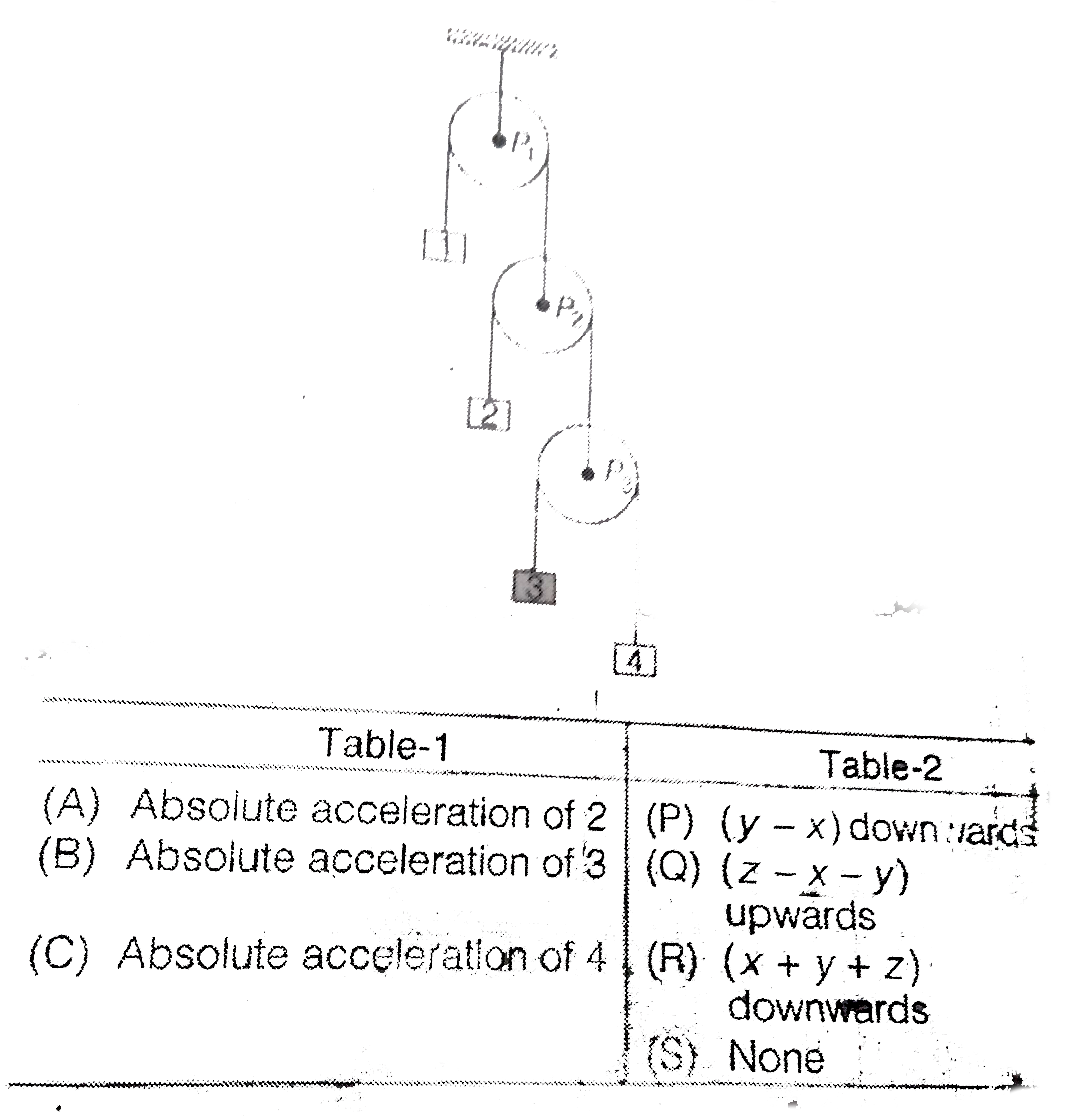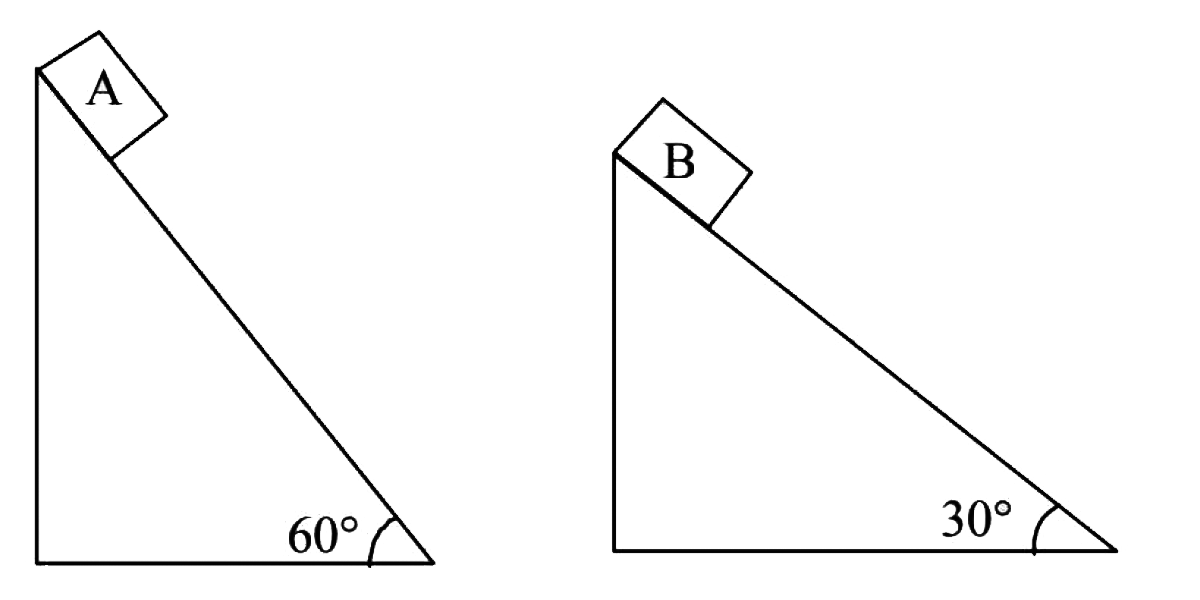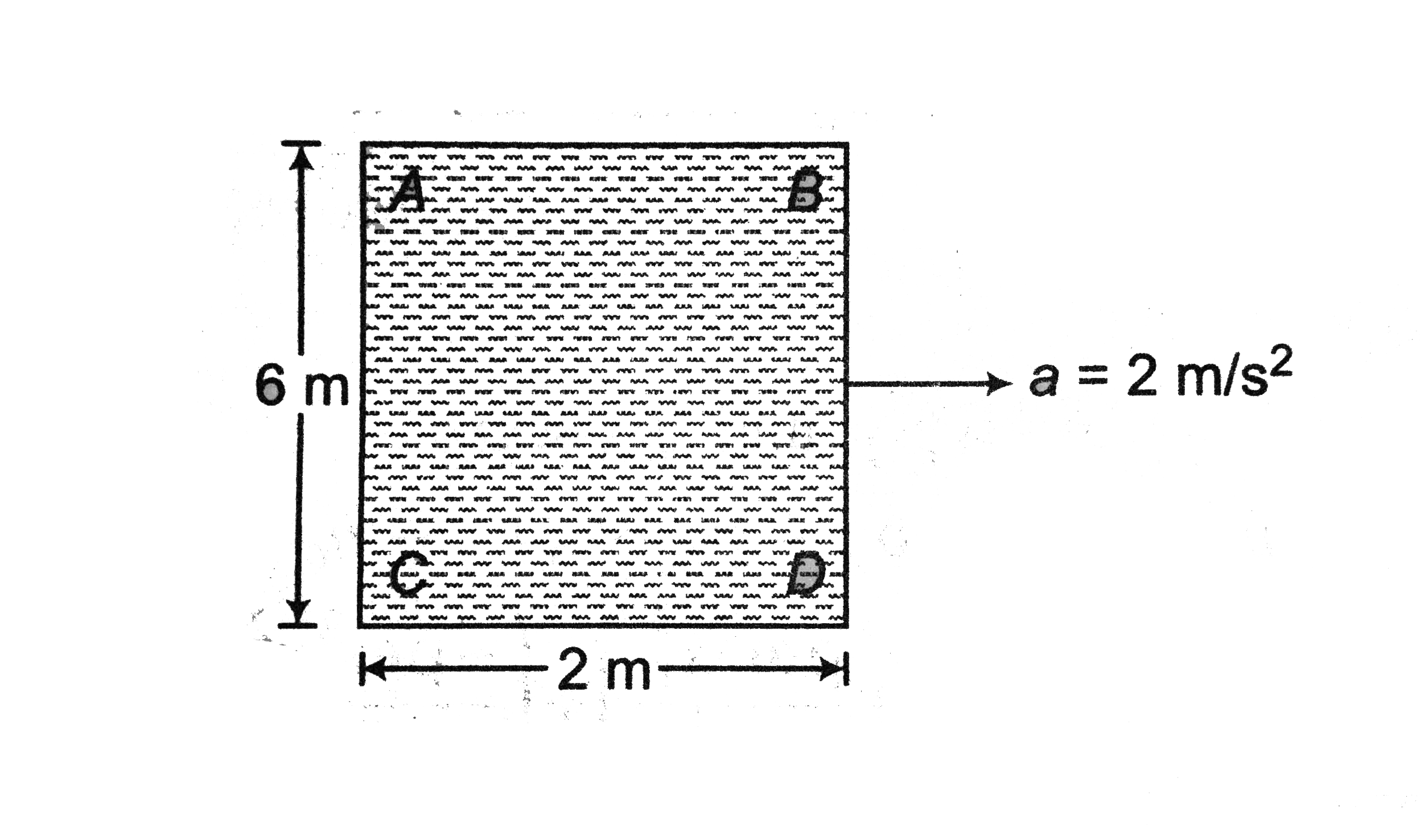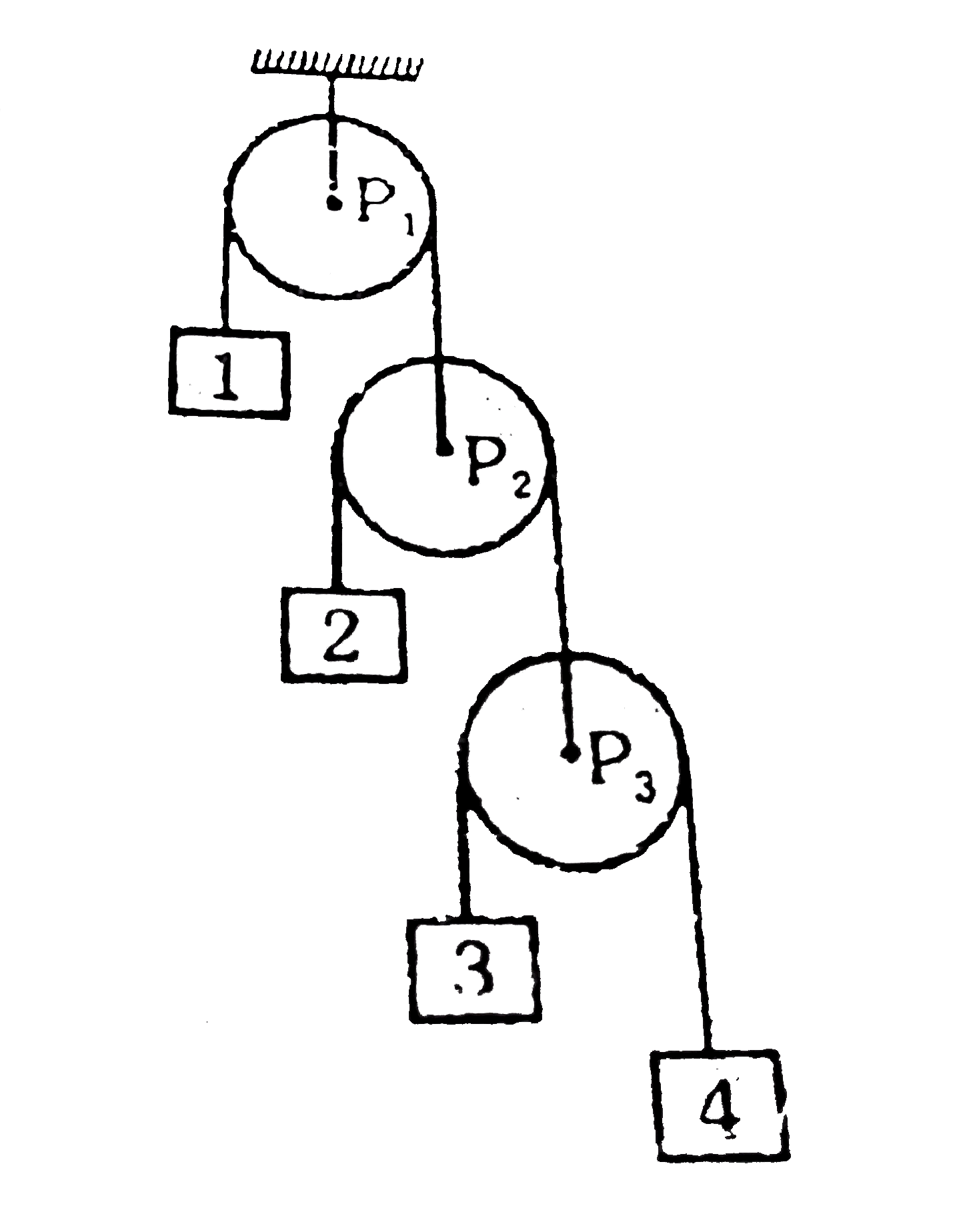In the figure shown ,acceraltion of is x (upwards ) Acceleration o fpulleys p3 with respect to pulley p2 is y (downwards) and accelarataion of f4 wioth respect to pul,ley p3 is z (upwards). Then match the following
 Solution in Gujrati
Solution in Gujrati
The correct Answer is:A-S B-R C-Q
Step by step video & image solution for In the figure shown ,acceraltion of is x (upwards ) Acceleration o fpulleys p_(3) with respect to pulley p_(2) is y (downwards) and accelarataion of f4 wioth respect to pul,ley p_(3) is z (upwards). Then match the following by Physics experts to help you in doubts & scoring excellent marks in Class 12 exams.
Updated on:21/07/2023Topper's Solved these Questions
- NEWTON'S LAWS OF MOTION & FRICTIONBOOK - ALLEN CHAPTER - NEWTON'S LAWS OF MOTION & FRICTIONEXERCISE - EXERCISE (JM)
6 Videos
- NEWTON'S LAWS OF MOTION & FRICTIONBOOK - ALLEN CHAPTER - NEWTON'S LAWS OF MOTION & FRICTIONEXERCISE - EXERCISE (JA)
4 Videos
- NEWTON'S LAWS OF MOTION & FRICTIONBOOK - ALLEN CHAPTER - NEWTON'S LAWS OF MOTION & FRICTIONEXERCISE - EXERCISE (O-1)
50 Videos
- MOTION IN A PALNEBOOK - ALLEN CHAPTER - MOTION IN A PALNEEXERCISE - SOLVED EXAMPLE
28 Videos
- NEWTONS LAWS OF MOTIONBOOK - ALLEN CHAPTER - NEWTONS LAWS OF MOTIONEXERCISE - EXERCISE-III
28 Videos
Similar Questions
Two fixed frictionless inclined planes making an angle 30∘ and 60∘ with the vertical are shown in figure. Two blocks A and B are planes. What is the relative vertical acceleration of A with respect to B?

View SolutionA piece of wire is bent in the shape of a parabola y=kx2 (y-axis vertical) with a bead of mass m on it. The bead can slide on the wire without friction. It stays at the lowest point of the parabola when the wire is at rest. The wire is now accelerated parallel to the x-axis with a constant acceleration a. The distance of the new equilibrium position of the bead, where the bead can stay at rest with respect to the wire, from the y-axis is:
View SolutionA ball of mass m kept at the corner as shown in the figure, is acted by a horizontal force F. The correct free body diagram of ball is

View SolutionA particle thrown over a triangle from one end of a horizontal base falls on the other end of the base after grazing the vertex. If αandβ are the base angles of triangle and angle of projection is θ, then prove that (tanθ=tanα+tanβ)
View SolutionAssertion: The driver in a vechicle moving with a constant speed on a straight road is in a non-inertial frame of referance.
Reason: A reference frame in which Newton's laws of motion are applicable is non-inertial.
View SolutionA closed container shown in figure is filled with water (ρ=103kg/M3)

This is accelerated in horizonal direction with an acceleration, a=2m/s2.Find (a)pC−pD and (b) pA−pD.
View SolutionIn the figure shown, acceleration of 1 is x (upwards). Acceleration of pulley P3, w.r.t. pulley P2 is y (downwards) and acceleration of 4 w.r.t. to pulley P3 is z (upwards). Taking upward +ve and downward -ve then

Column IColumn II(A)Absolute acceleration of 2(p)(y−x)downwards(B)Absolute acceleration of 3(q)(z−x−y)upwards(C)Absolute acceleration of 4(r)(x+y+z)downwards(s)None
View SolutionIn the figure shown ,acceraltion of is x (upwards ) Acceleration o fpulleys p3 with respect to pulley p2 is y (downwards) and accelarataion of f4 wioth respect to pul,ley p3 is z (upwards). Then match the following

View SolutionIf (1−x+x2)4=1+P1x+P2x2+P3x3+...+P8x8, then prove that : P2+P4+P6+P8=40 and P1+P3+P5+P7=−40.
View SolutionA cylindrical tank contains water up to a height H. If the tank is accelerated upwards with acceleration a, the pressure at the A is p_(1) . If the tank is accelerated downwards with acceleration a the pressure at A is p_(2) . Then
View Solutionयदि (1−x+x2)4=1+P1x+P2x2+P3x3+...+P8x8, तो सिद्ध कीजिए कि -
P2+P4+P6+P8=40 और
P1+P3+P5+P7=−40
View SolutionIF molecular axis is X then which of the following overlapping will form pi bond? p_(z)+p_(z),p_(x)+p_(x),p_(x),p_(y),s+p_(z),p_(y)+p_(y)
View SolutionIf I is incentre of the triangle ABC,P1,P2,P3 are radii of circum circles of ΔleIBC,ICA,IAB respectively
View SolutionIf p1,p2,p3 are respectively the perpendiculars from the vertices of a triangle to the opposite sides, then p1p2p3 equals
View SolutionI is the incentre of ΔABCandP1,P2andP3 respectively are the radii of the circumcircles of the ΔIBC,ΔICAandΔIAB . Then P1P2P3=
View SolutionConsider the equations P=Lim_(Deltasto0)F/(DeltaS) and P_(1)-P_(2)=rhogz . In an elector acceleration upward
View Solution
